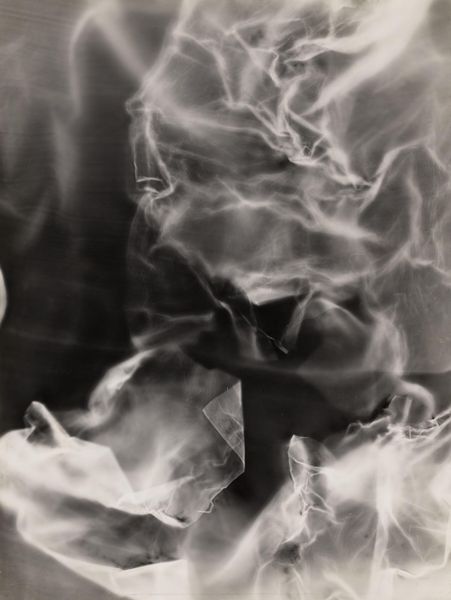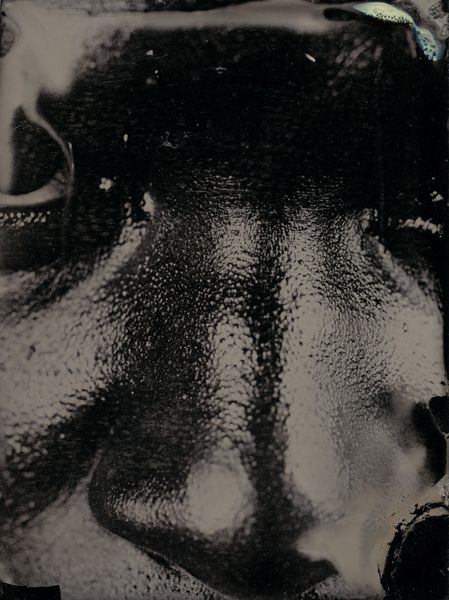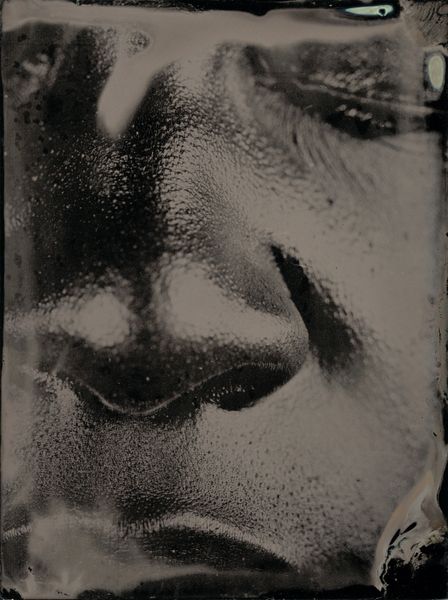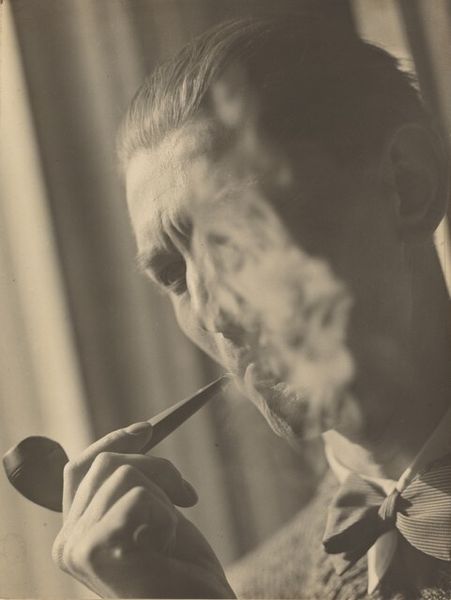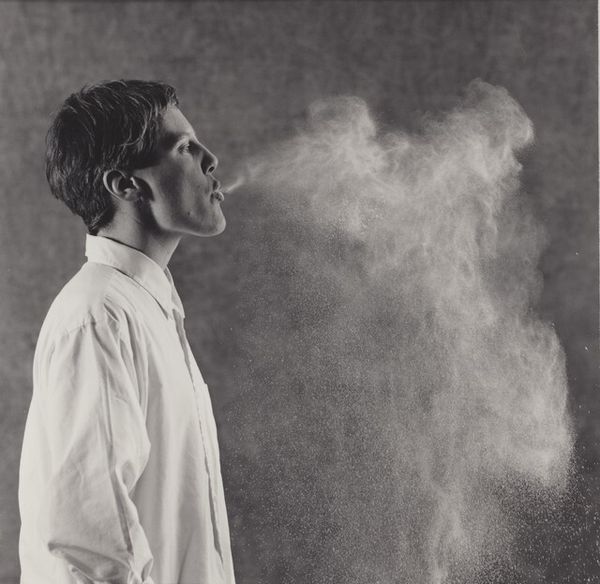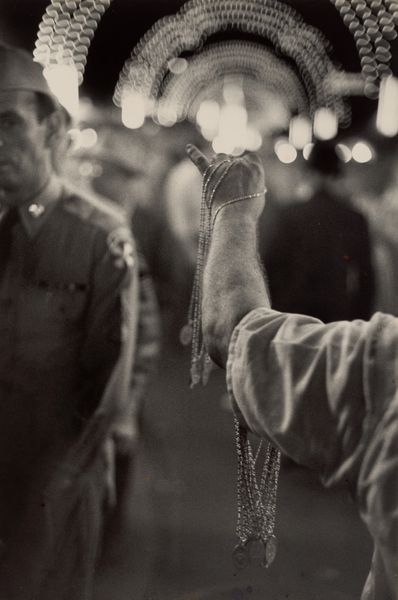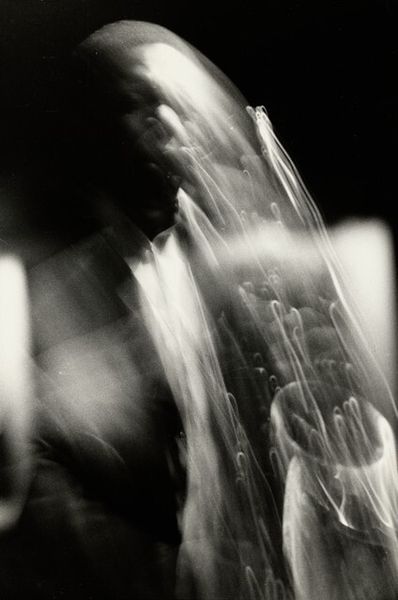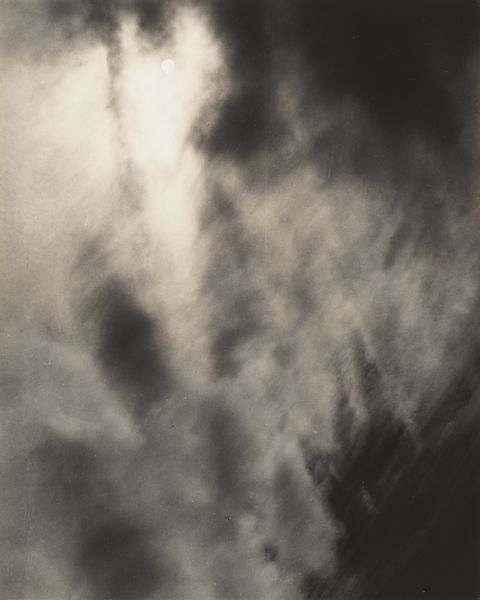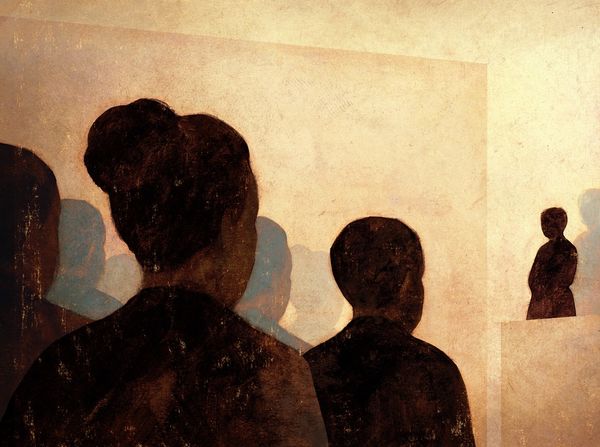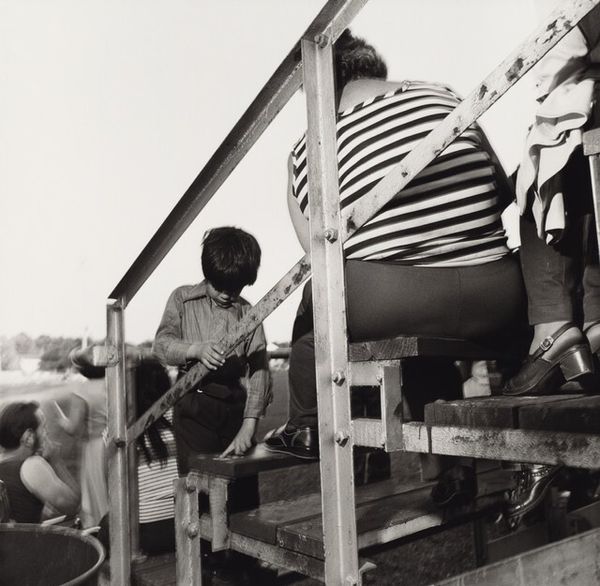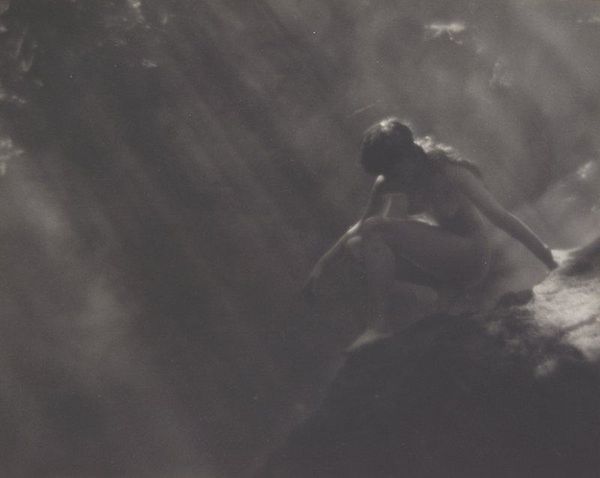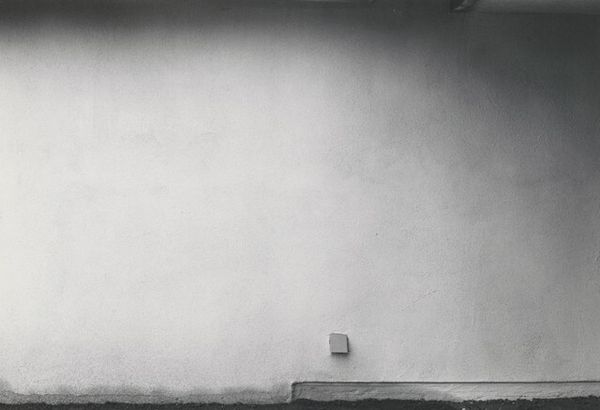
photography, gelatin-silver-print
#
portrait
#
black and white photography
#
black and white format
#
warm monochrome
#
social-realism
#
street-photography
#
photography
#
black and white theme
#
gelatin-silver-print
#
monochrome photography
#
monochrome
Dimensions: image: 20.64 × 31.75 cm (8 1/8 × 12 1/2 in.)
Copyright: National Gallery of Art: CC0 1.0
Editor: This is Shomei Tomatsu’s "Cigarette Smoke," likely taken sometime between 1965 and 1980. It's a gelatin-silver print, and the dense monochrome really sets a mood, almost claustrophobic, especially with the figures so close together and obscured by the smoke itself. What strikes you about it? Curator: The image operates on several material levels. On the surface, we have the gelatin-silver print – a specific industrial product made through a chemical process involving light-sensitive emulsions. The photographic process is labor-intensive: the silver mining, manufacturing of film, developing chemicals, not to mention the labor of the photographer and darkroom technicians. Are these workers' hands represented in the photograph as much as the people captured in the photo itself? How does the value of that labor manifest itself here, when juxtaposed with these ordinary, perhaps disenfranchised, people? Editor: That's a compelling way to look at it, relating the making of the image to the lives of those within it. Curator: Exactly. The very act of smoking cigarettes is also related to an elaborate system of agricultural production, global trade networks, marketing and distribution of a commodity that has detrimental consequences for both the consumer and environment. Are we seeing a visual representation of these economic systems literally going up in smoke? Editor: I never considered it that way, thinking about all the layers of production and labor tied to something as seemingly simple as a photograph of people smoking. Curator: Precisely. Think about how those processes connect us to the scene depicted, and even implicate us as viewers consuming images and information in a similarly detached manner. Editor: So it's about seeing beyond the surface representation to understand the underlying systems and how we participate in them. Thank you! Curator: Indeed. I am so glad we examined the different layers of material culture in this intriguing artwork.
Comments
No comments
Be the first to comment and join the conversation on the ultimate creative platform.

